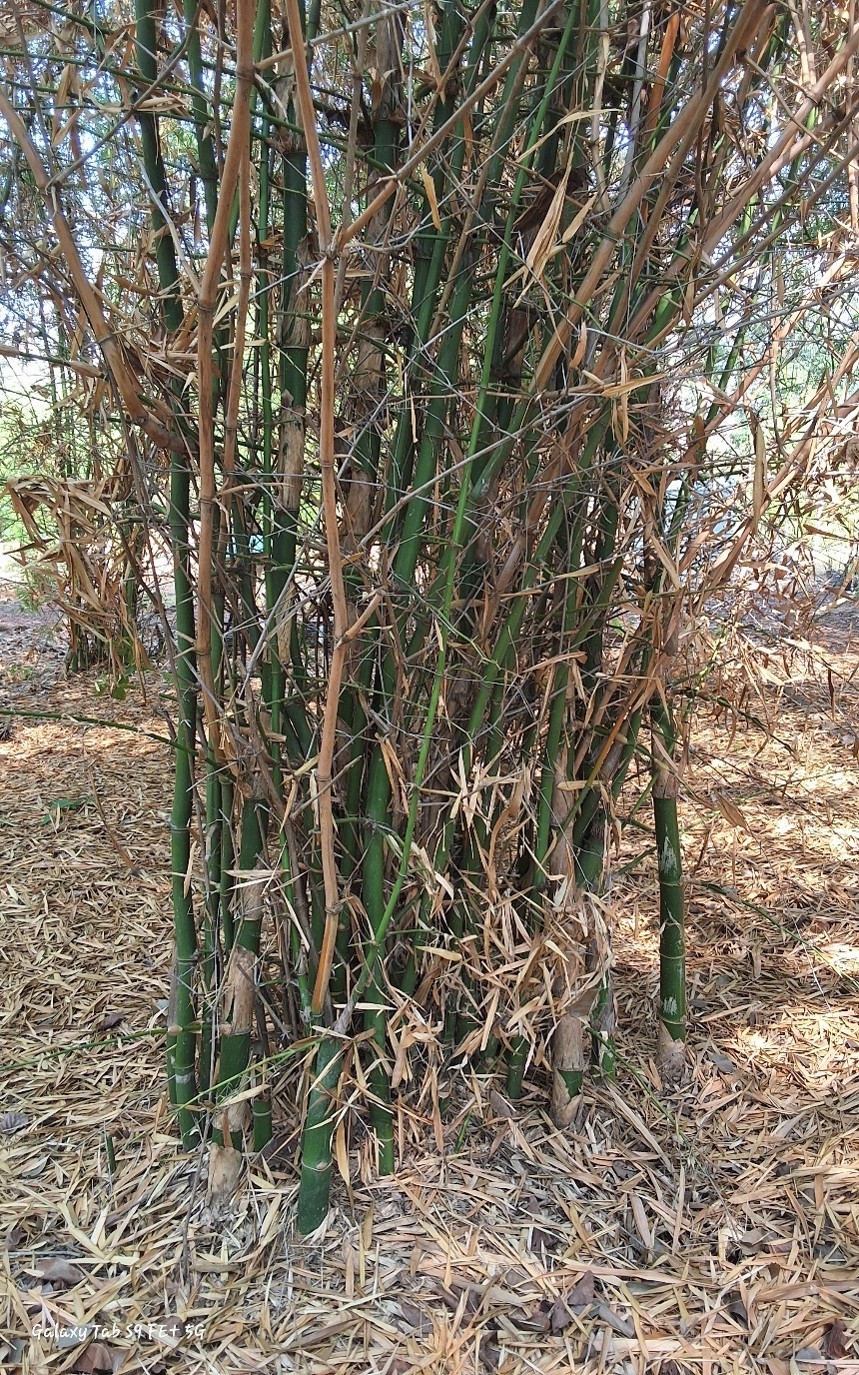Bambusa bambos

Bambusa bambos
commonly known as Giant Thorny Bamboo, is a significant species native to the Indian subcontinent, with various regional names such as Katanga Bans in M.S., Ketaba, Mullu, Vedura Behor Bans in Bengal, Kanta Bans in Hindi, and mungil in Tamil. Kotoba in asam, Sanivi in Manipur, abongu veduru in A.P. Nalbansin in Panjab This bamboo species is known for its dense, thorny clumping habit. The culms of Bambusa bambos grow to a height of 15-25 meters and have a diameter of 8-15 cm. The culms start off bright green and gradually turn dull green with age. The internode length ranges from 30 to 60 cm. The culm sheaths are green when young, turning brown and deciduous with age. The adaxial surface of the sheath is glabrous, while the abaxial surface is covered with dark brown hairs. The margins of the sheaths are ciliate. The leaves are lanceolate in shape, tapering to a fine point, and measure 15-25 cm in length and 2-5 cm in width.
Bambusa bambos is found in a wide range of habitats, including tropical and subtropical forests, riverbanks, and moist valleys. It is commonly distributed in Kerala, Karnataka, Tamil Nadu, Maharashtra, and Northeast India and has been introduced to Sri Lanka, Myanmar, and Southeast Asia. The species is adaptable to various soil types, including clayey and sandy soils. It grows best at elevations of up to 1000 meters. This bamboo species requires an annual rainfall range of 1200 to 3000 mm for optimal growth.
The inflorescence of Bambusa bambos is composed of large panicles, 1-3 cm long, with spikelets forming dense clusters. The empty glumes are small, ovate, and acute, while the flowering glumes are larger with ciliations on the edges. The stamens are prominently exserted, with glabrous anthers and a pubescent style. Bambusa bambos has a flowering cycle that occurs every 40-60 years, with the last reported flowering events occurring in Kerala, Tamil Nadu, and parts of Karnataka between 1990 and 1995. The species rarely produces seeds, which are small and have irregular viability.
Propagation of Bambusa bambos is primarily through offsets, culm cuttings, and tissue culture, as seed production is infrequent. This species is widely used in various industries, such as scaffolding, house construction, fencing, the pulp and paper industry, and for making furniture, mats, baskets, fishing rods, and agricultural tools. Additionally, the edible bamboo shoots of Bambusa bambos are consumed in many regions, further highlighting its economic importance.
Listen Audio:
Need assistance? BRTC Faculty